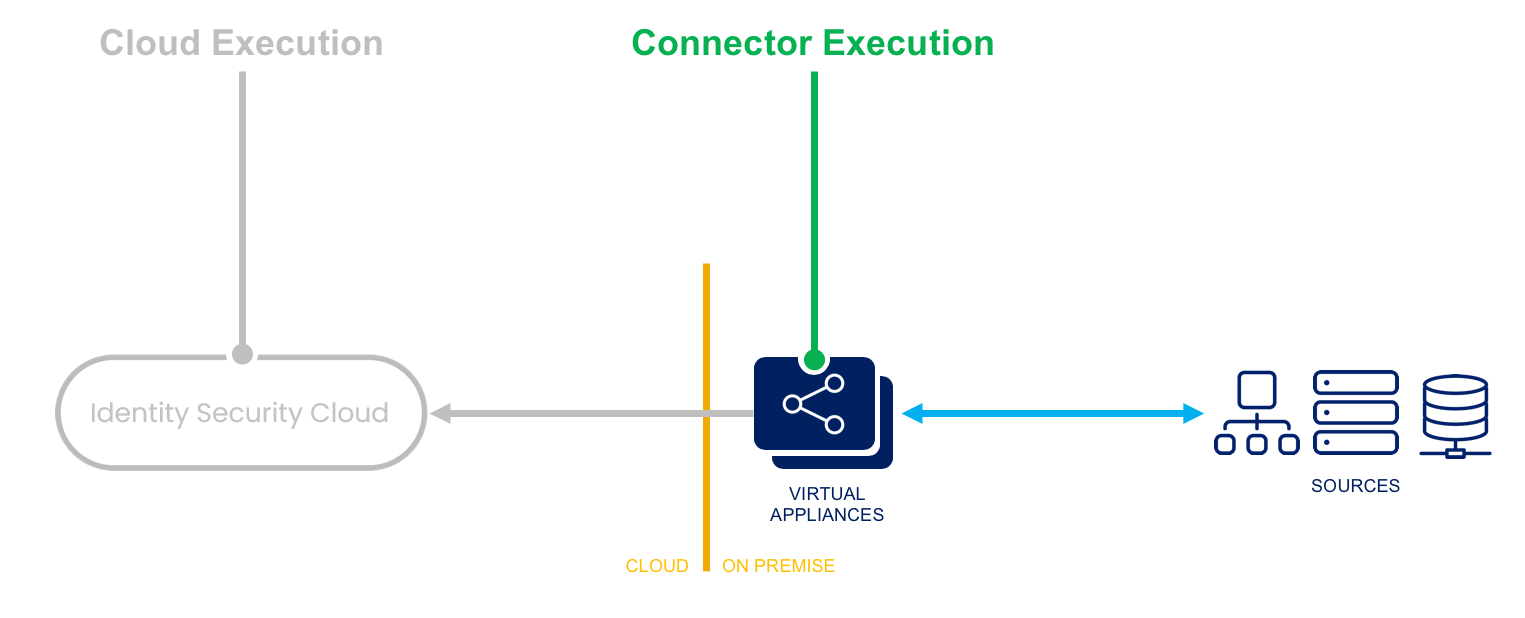Web Services After Operation Rule
Overview
This rule calculates attributes after a web-service operation call.
Execution
- Connector Execution - This rule executes within the virtual appliance. It may offer special abilities to perform connector-related functions, and it may offer managed connections to sources.
- Logging - Logging statements are viewable within the ccg.log on the virtual appliance, and they are viewable by SailPoint personnel.

Input
| Argument | Type | Purpose |
|---|---|---|
| application | sailpoint.object.Application | Application whose data file is being processed. |
| processedResponseObject | List<Map<String, Object>> | List of map (account/group). The map contains a key, the identityAttribute of the application schema, and a value, all the account/group attributes (schema) passed by the connector after parsing the respective API response. |
| requestEndPoint | sailpoint.connector.webservices.EndPoint | Current request information. It contains the header, body, context url, method type, response attribute map, successful response code. |
| restClient | sailpoint.connector.webservices.WebServicesClient | WebServicesClient (HttpClient) object that enables the user to call the Web Services API target system. |
| rawResponseObject | String | String object that holds the raw response returned from the target system, which can be in JSON or XML form. |
Output
| Argument | Type | Purpose |
|---|---|---|
| updatedAccountOrGroupList | java.util.Map | Map object returned from the After Operation Rule. It may contain any or all of the following: an updated list of account / group resource objects, identified by key data/ attribute values to be updated into application by the connector state map identified by key connectorStateMap. Each resource (account/group) object is of type Map, which contains the key-value pair. The key represents the schema attribute name, and the value represents the account/group attribute value. |
Template
<?xml version='1.0' encoding='UTF-8'?>
<!DOCTYPE Rule PUBLIC "sailpoint.dtd" "sailpoint.dtd">
<Rule name="Example Rule" type="WebServiceAfterOperationRule">
<Description>Describe your rule here.</Description>
<Source><![CDATA[
// Add your logic here.
]]></Source>
</Rule>
Example
<?xml version='1.0' encoding='UTF-8'?>
<!DOCTYPE Rule PUBLIC "sailpoint.dtd" "sailpoint.dtd">
<Rule name="Example Rule" type="WebServiceAfterOperationRule">
<Description>This rule is used by the Web Services connector after performing any operation like testconnection, aggregation etc.</Description>
<Source><![CDATA[
import connector.common.JsonUtil;
import java.util.HashMap;
import java.util.Map.Entry;
import java.util.Map;
import java.util.List;
import java.util.ArrayList;
import javax.net.ssl.HttpsURLConnection;
import java.io.BufferedReader;
import java.io.PrintStream;
import java.io.StringWriter;
import java.text.SimpleDateFormat;
import sailpoint.tools.GeneralException;
Map updatedMapInfo = new HashMap();
List list = new ArrayList();
ArrayList<String> Roles = new ArrayList<String>();
Map response = (Map) JsonUtil.toMap(rawResponseObject);
int RoleSize = 0;
String newName;
List Finallist = new ArrayList();
List workspace = new ArrayList();
log.error("RULES response at start" + response);
if (response.get("data") != null) {
list = (ArrayList) response.get("data");
for(int d = 0; d < list.size(); d++ ){
Map responseMap = (Map) list.get(d);
if (responseMap.get("attributes") != null) {
Map newmap = new HashMap();
Map data = (Map) responseMap.get("attributes");
newmap.put("firstName", data.get("firstName"));
newmap.put("lastName",data.get("lastName"));
newmap.put("displayName",data.get("displayName"));
newmap.put("userName",data.get("userName"));
newmap.put("email",data.get("email"));
if (data.get("workspaceMemberships") != null) {
ArrayList Workspacedetail = (ArrayList) data.get("workspaceMemberships");
for (int i = 0; i < Workspacedetail.size(); i++) {
Map work = (Map) Workspacedetail.get(i);
for (int w = 0; w < work.size(); w++) {
if (work.get("workspaceName") != null) {
workspace.add(work.get("workspaceName"));
Roles = (ArrayList) work.get("workspaceRoles");
for (int r = 0; r < Roles.size(); r++) {
if (Roles.get(r) != null) {
newName = Roles.get(r).toString() + " - " + work.get("workspaceName");
if(newName != null) {
Roles.set(r, newName);
newmap.put("workspaceRoles", Roles);
}
}
}
}
break;
}
}
}
Finallist.add(newmap);
}
}
}
log.error("RULES newmap at end" + newmap);
log.error("RULES Finallist at end" + Finallist);
log.error("RULES processedResponseObject Before is " + processedResponseObject);
updatedMapInfo.put("data", Finallist);
log.error("RULES updatedMapInfo is " + updatedMapInfo);
return updatedMapInfo;
log.error("RULES processedResponseObject after is " + processedResponseObject);
]]></Source>
</Rule>
Attach to source
Refer to Attaching Connector-Related Rules to Sources for details on how to attach your rule to your source.